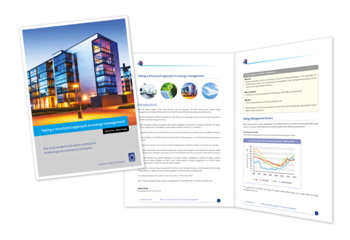Breaking down the benefits of effective control

Carefully-specified building-management systems can have a dramatic impact on the energy efficiency of modern buildings — and the good news is that an increasing number of businesses are now catching on to the benefits, writes Gavin Holvey of Priva UK.
The impetus for businesses of all shapes and sizes to review their use of energy has been growing increasingly intense in recent years. Rising energy costs have prompted more careful thought about lowering consumption, while national and international carbon-reduction initiatives have also entered the frame.
With the next decade set to herald significant energy shortfalls in the UK, this call for change will only become more acute. It is fortunate, then, that we live in a period in which it is easier than ever before for businesses to obtain information and technology that can help them to dramatically improve their overall energy efficiency.
The ISO 50001 standard, which was published in 2011, is a case in point. Now implemented by businesses in many different sectors, the standard touches on many aspects integral to making buildings more efficient, including the development of a specific policy for energy consumption, the establishment of fixed targets and objectives, and analysis and measurement of data related to energy use.
In terms of actual technology, companies can also look to invest in specific systems geared towards bringing about lower energy consumption, including intelligent lighting featuring the latest LED products and more-efficient boiler installations. But while overhauling individual systems can certainly make an important contribution, it is through the implementation of fully integrated building-management systems (BMSs) that companies can begin to achieve the greatest possible savings.
 |
| Being able to measure and analyse data related to energy use is a key feature of a BMS. |
When beginning to think about a BMS, it is vital to remember that there is no ‘right’ or ‘wrong’ approach. Solutions must be appropriate to the size, scale and operational nature of the building. For some small businesses — for example, suburban retail outlets — where systems are more straightforward, it may be that implementing sophisticated energy management simply isn’t practical or cost-efficient.
But for businesses operating on a grander scale, many other elements — including chillers, boilers and split unit air-conditioning in medium-sized premises, to full-scale heating, ventilation and air-conditioning systems in large buildings — have to be taken into account. Optimising these systems can most effectively be achieved by comprehensive BMS installations.
The complexity of a BMS in any given location will inevitably be determined by the nature of the building, but in basic terms such systems will generally encompass sensors, actuators and controllers, software (including programs set up to deliver the control strategy) and a network or networks. Also needed will be interfaces with other systems such as utility meters, lighting, fire alarms and security technology. Finally, the end-user will require access via a web browser or operator touch-screen.
The result of this kind of integrated approach is a far greater level of functionality than would be offered by manual or discrete controls. In addition to collecting extensive data relating to energy consumption, a BMS makes it possible to set temperature and humidity in various zones, establish different time schedules, and achieve specific control of functions — including lighting, ventilation, hot water, security and more
 |
| A structured approach to energy management is laid out in this white paper from Priva. |
Ultimately, this means that energy is only used where and when it is required. In addition, as the usage patterns of a building change in response to new workloads or responsibilities, adjustments to the configuration can be made in a few clicks. Over the longer-term, the data collated by the BMS can be used to track the energy consumption of a business — allowing it to budget effectively for the future so that there is a much-diminished risk of incurring unexpectedly high energy bills.
It is important to remember that BMS is not a panacea for all ills and that the most effective implementations often take place as part of far-reaching CSR (corporate social responsibility) strategies. In addition, the configuration of any BMS will need to be reviewed on a regular basis if it is to remain effective.
But there is no doubt that the migration towards BMS being a commonplace choice for medium and large buildings is now firmly underway. The fact that system prices have come down significantly is clearly a spur to action here; for example Priva offers a wide range of cost-effective packages — including Blue ID, TC Energy and a cloud-based solution powered by Microsoft Azure.
In recent months, we have also made a contribution to the general debate taking place around energy management. Available now to download free from the Priva website, the fully updated version of our white paper, entitled ‘Taking a structured approach to energy management’, outlines the path that can be taken to overcome the systematic energy waste that drives up CO2 emissions and energy bills — a route that has BMS as one of the primary destinations.
Gavin Holvey is Priva UK and Ireland sales manager.








